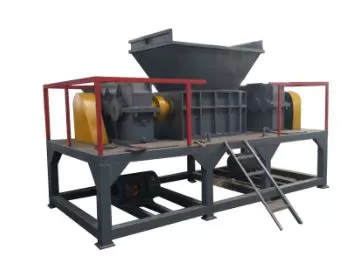In the bustling world of manufacturing and environmental sustainability, the question of recycling not just materials, but the machinery that processes them, takes center stage. As the CEO of Amige, a leader in the production of plastic recycling machinery, I’ve navigated the complexities of this issue firsthand. But what does the recycling of machines for plastic entail?

At its core, recycling machines for plastic involves refurbishing, repurposing, or breaking down machinery to reclaim valuable components and materials. It’s a process that not only extends the life of the equipment but also aligns with our commitment to sustainability at Amige.
Understanding this process is crucial, not just for those in the recycling industry, but for anyone interested in the lifecycle of manufacturing equipment.
What Constitutes Plastic Recycling Machinery?
Plastic recycling machinery encompasses a range of equipment used in the process of converting plastic waste into reusable material. This includes shredders, granulators, extruders, and wash lines, among others.
Why Recycle Recycling Machinery?
The reasons are manifold. Firstly, it’s about reducing waste and conserving resources. But it’s also about economic efficiency. By recycling or refurbishing machinery, we extend its lifespan, reduce the need for new equipment, and lower the overall environmental impact.
The Process of Recycling Plastic Recycling Machinery
Recycling machinery begins with an assessment of the machine’s condition. We determine whether it can be refurbished for further use or if it should be dismantled for parts. Components that are in good working order can be reused in other machines or sold as replacement parts.
Materials such as steel, aluminum, and copper are recovered and sent to metal recycling facilities. This not only provides raw materials for new products but also reduces the environmental impact associated with mining and processing these metals.
The Challenges of Recycling Machinery
The primary challenge lies in the complexity and variety of machinery. Each machine has its own unique set of components, materials, and potential pollutants. Ensuring safe and effective recycling requires expertise and a thorough understanding of each piece of equipment.
The Role of Technology in Recycling Machinery
Advancements in technology play a crucial role in the recycling process. Innovations in diagnostics, material recovery, and component refurbishment allow us to recycle machinery more efficiently and effectively than ever before.
The Future of Plastic Recycling Machinery Recycling
Looking ahead, the potential for growth and improvement in this area is vast. As we continue to develop new methods for recycling and refurbishing, we move closer to a truly circular economy, where waste is minimized, and resources are continually reused.
How Businesses Can Contribute
Businesses play a crucial role in this ecosystem. By prioritizing the maintenance of machinery, opting for refurbished equipment, and responsibly recycling machines at the end of their lifecycle, companies can significantly impact environmental sustainability. companies can significantly impact environmental sustainability.
Conclusion
Recycling machines for plastic is more than a technical process; it’s a commitment to sustainability and innovation. At Amige, we’re not just manufacturing machines; we’re cultivating a culture of environmental responsibility and pushing the boundaries of what’s possible in recycling technology. Through continued dedication and collaboration, we can make significant strides toward a more sustainable future for the manufacturing and recycling industries.
This exploration into the world of recycling machinery for plastic has hopefully shed light on the importance and complexity of this process. As we move forward, let’s remember that each step taken towards recycling and refurbishing is a step towards a more sustainable and efficient future.
